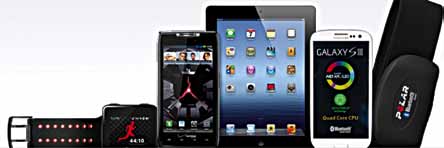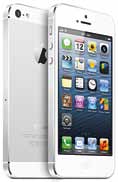
The Bluetooth SIG is a global trade association with more than 17,000 member companies. It was formed with five companies in 1998, and today, has a member-ship that surpasses 17,000 companies worldwide.
Last year, Apple announced that the iPhone 4S will support Bluetooth v4.0 and become the first Bluetooth Smart Ready phone. The SIG adopted 29 new Bluetooth v4.0 profiles, services, protocols and prototyping specifications, creating the infrastructure for Bluetooth Smart devices.
Elaborating on the Bluetooth 4.0 technology, Suke Jawanda, chief marketing officer, Bluetooth SIG, shared that it was a revolutionary update for Bluetooth as its low-power feature enable whole new categories of devices to become part of the connected world.
“As these devices can now run for months or years on a tiny battery, it is now feasible to liberate data from just about any electronic device you can imagine (security sensor, athletic equipment and apparel, toothbrush, thermostat, heart rate monitor) and send that data to applications that are on the ubiquitous Bluetooth hub devices like smart phones or tablets, or to the cloud,” he said.
Where is Bluetooth 4.0 being used?
Bluetooth 4.0 is currently appearing in hub devices and edge devices. The Bluetooth SIG refers to hub devices using Bluetooth 4.0 as ‘Bluetooth Smart Ready,’ as these are ‘ready’ to connect to the entire universe of Bluetooth devices in the market. Examples of Bluetooth Smart Ready products in the market are the iPhone 5 and 4S, new iPad, Motorola RAZR and Samsung Galaxy, just to name a few.
Low-energy edge devices are referred to as Bluetooth Smart. Examples of Bluetooth Smart devices are the Polar H7 heart rate monitor, the Wahoo Fitness Blue HC Cycling monitor and the Casio G-Shock GB-6900 smart watch.
All of the devices on the market can be found at www.bluetooth.com/Pages/Bluetooth-Smart-Devices-List.aspx
Almost no power requirement!
It seems that Bluetooth 4.0 is targeted for small, battery-operated devices and similar products that require almost no power. Jawanda agrees, adding that Bluetooth 4.0 uses a small fraction of the power consumed by previous versions of Bluetooth and many other wireless technologies.
Since it has been optimised for transmitting small bursts of data very efficiently, devices and sensors using Bluetooth 4.0 can run for years at a stretch without requiring a recharge or battery change. This dramatically increases the number of potential devices that can use wireless connectivity.
For example, wireless keyboards that run on two AA-size batteries and last up to six months without a recharge/replacement can now last over six years if they are a Bluetooth Smart device, given the ultra low-power performance of Bluetooth v4.0.
More applications and range!
It would be interesting to note some of the other applications suitable for Bluetooth 4.0.
According to Jawanda, virtually anything that needs to send relatively small burst of data (vs a constant stream like audio and video) at various times can be a suitable application for Bluetooth 4.0. Heart rate monitors, glucose meters, pedometers, cycling sensors, running sensors, running shoes, golf clubs, security and home automation sensors, watches and irrigation controllers are examples of Bluetooth Smart products coming to the market.
The range covered by Bluetooth 4.0 is approximately 30 metres, typically. “There is nothing inherent in the specification itself that limits the range. Range is a function of the environment the wireless device is operating in and the device hardware itself (for example, how powerful the antenna is),” Jawanda adds. There are industrial applications of Bluetooth that have a range of approximately 1 kilometre.
New use-cases
Does Bluetooth 4.0 open up new usecases, much more than Bluetooth 3.0 ever did?
The answer is ‘yes,’ and that’s because of Bluetooth 4.0’s ultra-low power consumption. Bluetooth is the key technology to bring billions of disconnected devices into the connected world. The technology is already transforming industries like sports and fitness today.

Bluetooth is enabling manufacturers to efficiently embed their power-sensitive products with a high-performing and secure sensor technology that allows them to securely send data to devices their customers already have (their phones, tablets, PCs) and feed the applications on these devices or in the cloud.
The data coming from the Blue-tooth sensor is then turned into information by the application, delighting end-users and allowing OEMs to have a deep service relationship with their customers.
Jawanda says, “We see this transformation happening in massive verticals like healthcare, smart home and industrial automation. The ‘Connected things’ are all part of the bigger movement towards the ‘Internet of things’ or IoT, and Bluetooth technology is considered as the backbone wireless technology to connect the billions of power-sensitive sensors ultimately to Web services.
“The proliferation of Bluetooth technology is booming, and ABI Research expects two billion Bluetooth-enabled products to be shipped in 2012 alone. The figure will grow to approximately 5 billion per year within the next few years.”
A total of ten billion Bluetooth products have already been shipped since inception. This massive network of connected devices will double by 2017. The new use-cases stimulated by Bluetooth v4.0 (and its hallmark low-energy feature) are driving much of this growth.
Bluetooth 4.0 also complements the continued proliferation of Bluetooth Basic Rate/Enhanced Data Rate (BR/EDR) that has and will continue to power wireless audio devices like wireless headsets, speakers and headphones.






